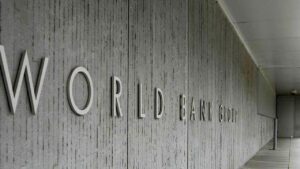
World Bank cites upside to GDP view with enhanced investment
PHILIPPINE gross domestic product (GDP) is expected to rise around 5.5% to 6% this year, with possible upside provided by accelerated investment and productivity reforms, according to the World Bank (WB).
“Over the past few years, what you see is that the economy has been very close to that potential output growth,” Gonzalo Varela, lead economist and program leader of the Equitable Growth, Finance and Institutions Practice Group for Brunei, Malaysia, the Philippines, and Thailand, said at a briefing at the World Bank office in Taguig City last week.
In its April update, the bank estimated Philippine economic growth at 5.8% this year and 5.9% next year.
If realized, this would fall within the Development Budget Coordination Committee’s revised 6-7% growth target for 2024.
The economy grew by a revised 5.5% in 2023, weaker than the World Bank’s 6% forecast at the time. It also failed to meet the government’s 6-7% target for the year.
“The important thing is that you get investment acceleration, you get reforms that stimulate productivity growth, so that potential output growth keeps rising and the economy can grow accordingly, sustainably, in a way that creates good quality jobs,” Mr. Varela said.
Growth in emerging markets and developing economies, which includes the Philippines and excludes China, is expected to accelerate this year, with average GDP growth estimated at 4%.
“There is growth, but that growth is somewhat subdued if you put it in a historical context and compare with the growth average prior to the pandemic,” according to Ayhan Kose, World Bank deputy chief economist and director of the Prospects Group.
Mr. Kose also noted that the US, one of the Philippines’ major export markets, will stay resilient this year.
Meanwhile, the global economy is expected to slow for a third consecutive year due to post-pandemic effects and ongoing geopolitical turmoil.
Other downside risks affecting the growth outlook include continued high interest rates, fragmented trade, disruptions in food and energy markets, climate change, and financial stress.
Possible inflation shocks, as well as “weaker-than-expected” near-term growth in major economies may also limit global growth, according to the WB.
“Global growth over the period 2020 (to) 2024 on average, in the first half of this decade, will be the lowest we have seen since the early 1990s,” Mr. Kose said at the briefing.
The World Bank expects the global economy to slow to 2.4% this year from 2.6% in 2023.
“That, in turn, could again, fuel inflation and will lead to a more protracted period of elevated real interest rates,” Mr. Kose said.
The WB expects major central banks to cut interest rates by the second half of the year if inflation cools further.
In the Philippines, headline inflation accelerated for a second consecutive month to 3.7% in February, due to surging prices of rice and other basic commodities.
Weakening trade, as well as a contraction in goods trade, also hampered global growth, Mr. Kose said.
“Excessive inventory accumulation, still challenges associated with geopolitical tensions, weak manufacturing activity… they all together led to the weak trade performance last year.”
“This year, we are expecting trade growth to be north of 2%, but still much lower than what we saw over the period 2010 (to) 2019 on average,” he added.
The WB called for greater global cooperation to address food security issues, climate change, debt distress, and trade fragmentation. — Beatriz Marie D. Cruz



